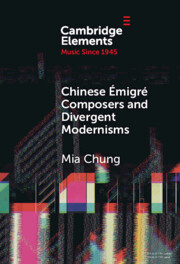Element contents
Chinese Émigré Composers and Divergent Modernisms
Published online by Cambridge University Press: 16 April 2024
Summary
Information
- Type
- Element
- Information
- Series: Elements in Music since 1945Online ISBN: 9781009158817Publisher: Cambridge University PressPrint publication: 30 May 2024
